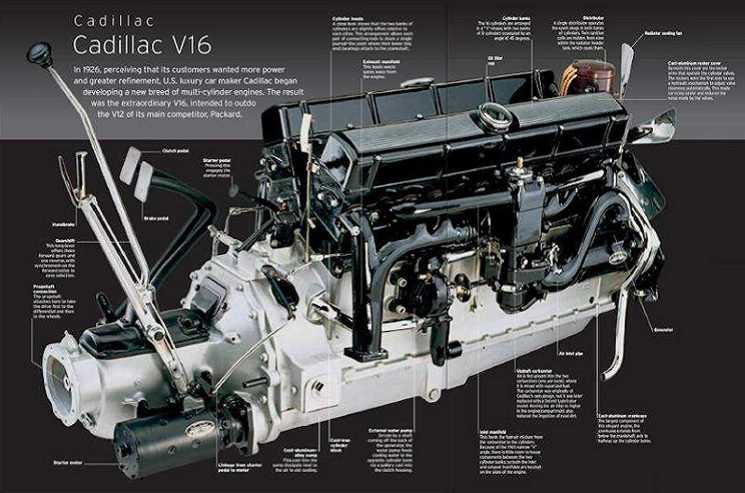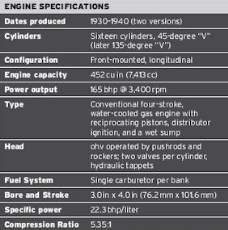A case of bad timing
An engine with more cylinders gives greater power than one of equivalent capacity but fewer cylinders. An engine with more cylinders also fires more times for each crankshaft revolution, giving a smoother delivery of torque (turning force).
These were the reasons that Cadillac chose a V16 for its new luxury car-a configuration that, later in the 1930s and in supercharged form, would impress in Ferdinand Porsche’s Auto Union racing cars.
Although the Cadillac V16 delivered all that was expected of it, its success was limited by the Great Depression and the outbreak of World War II.

The V16’s smaller brother Not only did Cadillac surpass the engines of its competitors with its V16, but it also matched them with a smaller V12. This was effectively its V16 engine with four cylinders taken off, although the cylinder bore was increased by 0.125 in (3.2 mm) to give a capacity of 368 cu in (6,033 cc). Because it retained the V16’s 45-degree bank angle, instead of having the natural 60-degree “V” of a V12, cylinder firing was uneven, but the engine’s smoothness remained acceptable.
